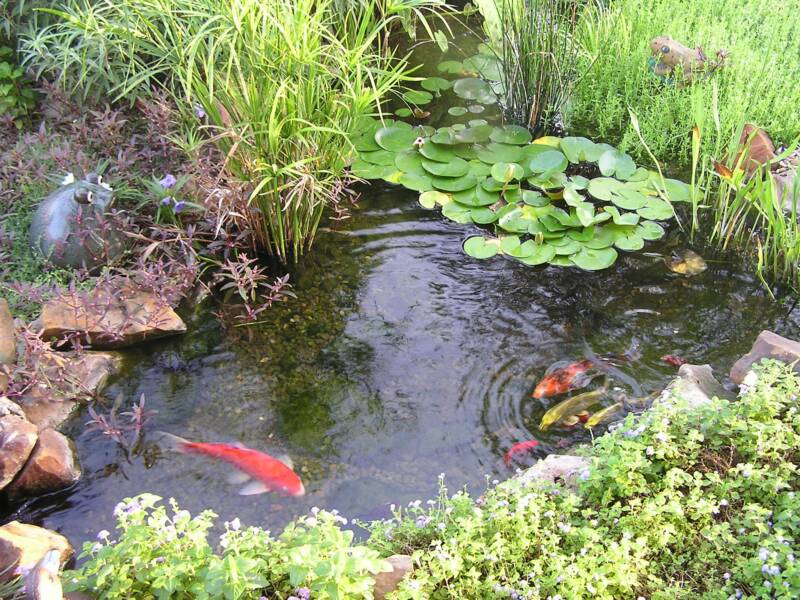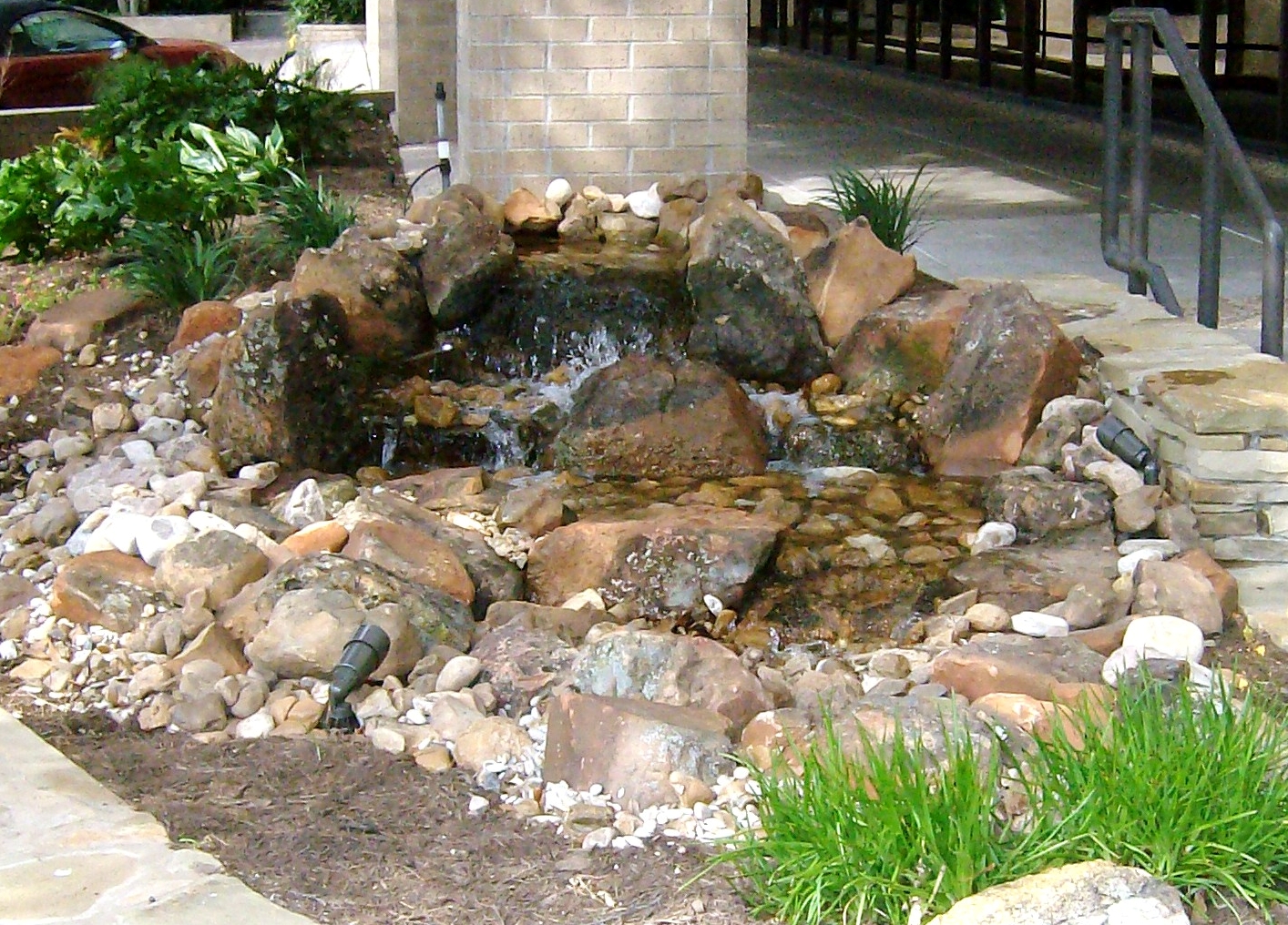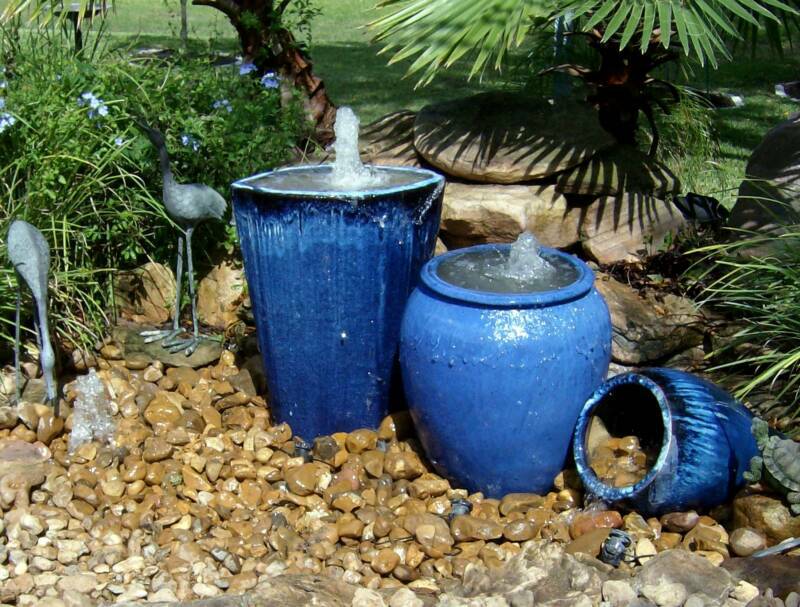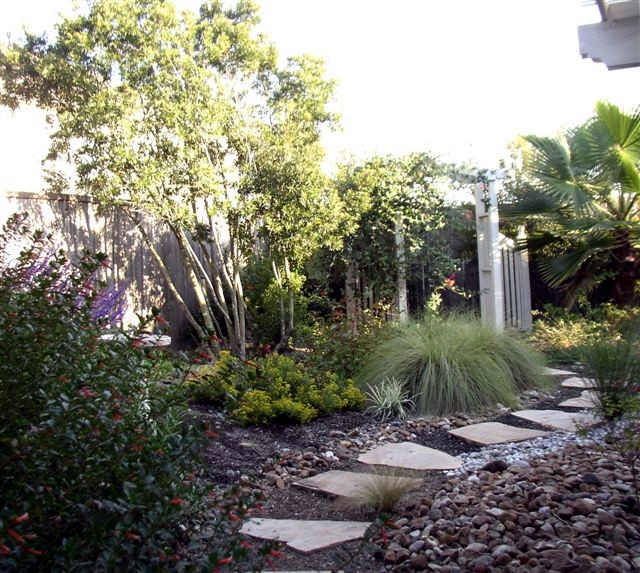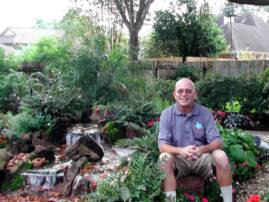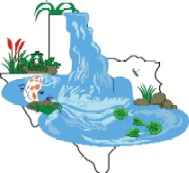


Rainwater Harvesting
Organic Ecosystem Ponds
Pondless Waterfalls
Urn and Fountain Features
Water-Wise Landscapes
Meet Your Water Feature Professionals


Texas Ponds and
Water Features
More Pond Myths Destroyed
by Matt Boring
The Natural Water Gardener
When you start to read about ponds, you often come across different sources with very different, sometimes contradictory information. Organic water gardening has changed the pond world significantly– lowering maintenance times, eliminating the need for expensive unnatural ‘cures’ for green water such as chemicals and UV radiation sterilizers, and increasing the relaxation and pleasure associated with owning a water garden. Many of the books on water gardens which are still circulating were written before this natural ponding revolution had firmly taken hold so their information is based on old ponding methods which were not natural. What I and other organic water gardeners have found is that if you work with nature to keep the system clean, clear, and healthy, rather than trying to subvert processes that are naturally-occurring and bend nature to your will, your pond ecosystem will flourish with very little help from you. With that introduction, I will now bring up and shoot down several more myths about water gardens.
Myth: Bigger ponds require more work.
Actually, as water features become larger, they become easier to maintain. Changes in the aquatic environment, such as rain for instance, make less of an impact on a large body of water than a small one. Fresh rainwater means fresh nutrients for your balanced pond ecosystem. A 1" rain into a 6'x8' pond is going to displace a much higher percentage of the pond’s water than would the same 1" of rain falling into a 15'x18' pond.
Aquarium hobbyists have long known that it’s easier to achieve a healthy stable tank with more water, not less. Small water features rarely have the flow or capacity necessarily for long term stability, so they may require more work to keep them balanced. When building a small water garden for a client, I always try to provide more filtration capacity than the pond could ever need, although rapid changes will still affect those ponds more and faster than a smaller pond.
Myth: You should never have string algae in your pond.
In fact, a little string algae is a healthy part of an aquatic ecosystem if it’s in proportion. You don’t want strings of algae forming and filling the pond, but a little green fuzz on some of the pond boulders is natural and a perfectly healthy part of the balance in your pond’s ecosystem. At some times, it can be your best ally to keeping your pond water clear. In particular, in the wintertime when many of the aquatic plants are dormant and not doing much to remove excess nutrients from the water, the string algae will continue to perform this task for you, helping to make sure that your water stays clear and clean. This also holds true for new ponds in which the plants haven’t yet taken root and begun their task of removing nutrients. A little organic barley straw hidden in your biological filter will help keep the string algae from getting out of hand.
Myth: To keep Koi and other pond fish, you need a three, four, or five foot depth.
The truth is that most water gardens need only a two-foot depth to keep fish. Digging deeper ponds means that the sides are less stable and less able to resist the hydraulic pressure from outside the pond walls. This occurs when rain falls and soaks into the soil around the pond. The soil gets wet, expands, and presses against the sides of the pond, and since the water in the pond offers less resistance than the heavy, water-laden soil, this can cause pond walls to collapse. I dig my ponds in levels usually 8-12" each, and interlock boulders around the perimeter of each level to guard against hydraulic pressure from the outside.
On larger ponds, you can have more levels and dig deeper while maintaining structural stability, although I’ve never personally done a pond over about 3 ½ feet deep. I have seen ponds built with the same techniques that I use exceeding 10 feet although these were not your average backyard ponds.
If you’re worried that the fish will get too hot, you shouldn’t worry. The water temperature should never get too hot for them. If you’re worried about them getting too much direct sun in a full-sun pond, then be sure to shade the water with aquatic plants and water lilies. Have your installer provide caves or even a tunnel for the fish to retreat into if it’s too bright for them. These ideas also give the fish a place to hide if they feel threatened by a predator. Fish tunnels in particular provide an opportunity for entertainment as your fish disappear into the tunnel and re-appear in another part of the pond. Koi and other pond fish hibernate in ponds just two feet deep through winters as cold as Minnesota’s.
Myth: Water gardens cost a fortune.
Having a water garden installed can provide an excellent return on investment if done correctly. Consulting with an experienced professional to construct for you a custom-designed water feature or doing some research and legwork before building your own will usually result in more value being added to your property than the amount you’re going to spend on your water garden. If done incorrectly, however, you could be setting yourself up for the classic money pit situation where you pour dollars after dollars into your pond without seeing the end of it. I’ve had the opportunity to go in and rebuild several of these money pits in my pond-building career and those clients end up being some real happy campers when I’m through. Not to say that my other clients aren’t happy with their water features, but those who have experienced the nightmare pond scenarios only to have the problems they’ve suffered with for so long disappear overnight are ecstatic.
A well-designed and professionally-built water feature that works with nature to maintain a healthy ecosystem and looks natural will probably start in the range of $4500 and go up from there as the size increases. That’s because, even with a small pond, you have the initial investment of BIOFALLS, skimmer, pump, plumbing, and liner. With those same components, I can build a 6'x8' pond or an 11'x16' pond by just using a larger liner and more rock.
I recently saw a house in Austin at which I’d installed a front yard water garden and landscape several years ago was up for sale. Curious, I took one of the free sales sheets from the brochure holder in the yard. It made me proud to see that the first thing the realtor mentioned about the house on both the front and back side of the sales sheet was the Koi pond and landscape that I’d installed. Even though the house has a swimming pool and recent interior upgrades, the pond was the number one selling point in the eyes of this experienced realtor.
Myth: Any landscaper can build a water garden.
The truth is that there is a difference between building a pond and building it correctly. The best landscaper doesn’t necessarily have the knowledge and experience to design and construct a natural water feature. Like I’ve said, much of the information on pond building out there is outdated and many times doesn’t include information on ecosystem water gardening. Make sure that your water garden installer has been trained and is experienced in the art of creating a natural-looking and naturally-functioning aquatic ecosystem. I started out designing and installing landscapes. Later, as I moved into the interesting new world of organic water gardens, I decided to specialize in this area. I went to many, many training events and read all the information I could on the subject. Over the years I’ve had the opportunity to try many different ideas and create many different styles of water gardens. The ponds I build today are leaps and bounds above the ponds I first created. It all comes from the benefit of experience and the willingness to specialize in something that I have a real passion for. Other experienced water gardeners find that same passion and we have inside us the artist’s desire to create something beautiful that will touch people’s lives for years to come, bringing them back to a closeness with nature. To me a water garden is more than just an addition to someone’s landscape. It’s a gateway back to a time of innocence when observing nature in action delighted us and filled us with wonder.
Happy Pondering!!

